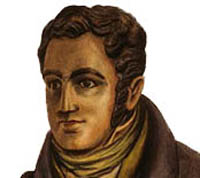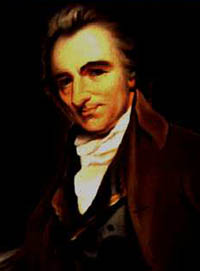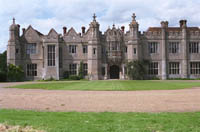 |
 |
 Bartholomew Gosnold
|
Early Settlers
People from East Anglia were amongst the first settlers in North America; indeed the first three counties were named Suffolk, Norfolk and Essex.
In 1602 Bartholomew Gosnold from Otley near Ipswich in Suffolk led an expedition aboard "Concord" to the coast of what was then called "the north parts of Virginia". Although he was born at Otley Hall, by April 1597, Bartholomew Gosnold and his wife Mary, (maiden name Golding), were living in Bury St Edmunds in Suffolk. He landed near Cape Cod and explored the area, naming Martha's Vineyard, either after his wife's mother or his recently deceased daughter. Five years later he returned with a larger party to create the first permanent settlement from England in the New World at Jamestown in (modern) Virginia. Not far from Jamestown there are cities called Suffolk and Norfolk. |
|
|
In spite of his undoubted importance in the exploration of N. America, Gosnold remains a surprisingly obscure figure. Visitors to East Anglia can learn more about him by visiting his birth place, Otley Hall. You can also find more details about his expeditions within this website at the Chronicle from 1596-1598, 1602, and 1606-1607. Gosnold died in 1607, but the story of the colony continues from 1609 to 1612. You can jump to these entries here, if you wish: Go to Chronicle for 1596. (Return via browser 'Back' button.) Nathaniel Ward, a preacher from Haverhill in Suffolk emigrated to Massachusetts and re-named the small community of Agarram as Ipswich. There is also a town called Haverhill in Massachusetts. In 1630 John Winthrop from the Suffolk village of Groton near Sudbury emigrated to take charge of the Massachusetts Company. He founded the city of Boston and became the first Governor of the State of Massachusetts. He has been described as the "Father of New England" and is buried in the Kings Chapel, Boston. His son John became first Governor of Connecticut and a major city in this state is named after the ancestral home, Groton. It was another Sudbury man, Thomas Davies, who set the lantern in the tower of Old North Church, Boston, giving the signal to Paul Revere to make his famous ride. |
 Thomas Paine |
Although Thetford is just outside our area, in the County of Norfolk, it is well worth mentioning that it was the birthplace of Thomas Paine, a radical and pamphleteer. He wrote "The Rights of Man" and "The Age of Reason", and was active in both the American and French Revolutions. Tom Paine was so influential on American political thought that, in 1964, the Thomas Paine Foundation of America presented the town of Thetford with a gilded statue of him. There are so many names in East Anglia which have counterparts in New England that the visitor from that area will feel very much at home here. Charles Lee was at school in Bury in the 1740's and eventually became a General but became controversial when he sided with the American colonists in the War of Independence and frequently fought against former colleagues. He was also to rival George Washington for command of the American forces but had to be content as Second in Command. Later he fell out with Washington and was court martialled. Culford Hall, home of Culford School was built by the Marquis of Cornwallis whose surrender of Yorktown in 1781 signalled impending victory for the Americans in the War of Independence. |
 Hengrave Hall |
Hengrave Hall was built in 1534 by Sir Thomas Kytson whose sister married John Washington, the ancestor of George Washington. A window in Hengrave Hall shows the arms of the Washington family including the stripes which are now part of the American flag. On the more colourful side, I can't resist including Poker Alice Tubbs (1851-1930) who was born, and lived until she was 12, in Sudbury, Suffolk where her father was a schoolmaster. The family moved to America and Alice married a mining engineer in Colorado at 19. He died in a mining accident and Alice took to dealing poker for a percentage, carrying a gun, and smoking big cigars. She worked for Bob Ford (who shot Jesse James) in Creede, Colorado until he, too was shot. She moved to Deadwood and married another gambler William Tubbs whose life Alice saved by shooting a drunken miner who went for him with a knife. Tubbs died and she married a sheepfarmer but gave this up in 1912 to open a club in Fort Meade, South Dakota. This time she shot and killed a drunken trooper and she finally died, gambling her life unsuccessfully on an operation at the age of 79.
|
| Go to American Connections |
Created 21 July 2000 (last updated 16th December, 2012) Page created by Giles Hainsworth a student from Bournemouth University | Go to Home Page |